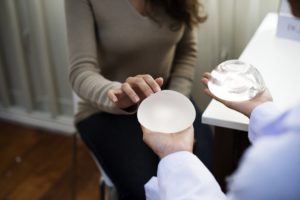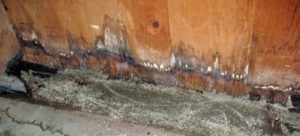The Dangers of Allergan’s Textured Implants: What You Need to Know

It’s no secret that plastic surgery is an ever-growing industry in the U.S. The stigmas and fears that were once attached to various nips and tucks have gradually faded away as more and more Americans have opted to go under the knife.
Perhaps the most well-known (and well-seen) facet of the plastic surgery industry is breast augmentation and reconstruction. In 2019 alone, there were over 280,000 breast augmentation procedures performed in the U.S., which amounts to over $1 billion in costs.
Unfortunately, while the technology has improved, some of the medicine has not. Perhaps the most tragic example are the textured implants produced by Allergan, which have proven to be linked with a rare form of lymphoma known as BIA-ALCL. As more women continue to be diagnosed, many could be entitled to reimbursement.
Who is Allergan?
For a free legal consultation, call (725) 900-9000
Allergan Inc. is one of the largest manufacturers of breast implants and tissue expanders in the world. Headquartered in Dublin, Ireland, their products are sold in more than 60 countries. They began selling breast implants in 2006, and the U.S. is their biggest market by far– their 2018 annual report cited over $250 million in sales for the region.
They offer a variety of products under their subsidiaries BIOCELL, Natrelle, McGhan, and Inamed. This includes implants that are filled with either silicone gel or saline solution, as well as tissue expanders for use in breast reconstruction surgery.
Smooth vs. Textured Silicone Gel Implants
Another key distinction in their products is the surface finish of the silicone-filled implants– they are offered in either a smooth or textured finish (saline products are only available with smooth outer shells).
Both options have their benefits depending on the patient; smooth implants are much more popular because they are easier to insert and can mimic the movement of natural breasts, while textured implants, according to medical literature, are used to reduce the risk of capsular contracture (the body rejecting the implant) as well as for women who have undergone mastectomies.
Click to contact our personal injury lawyers today
For many years, the debate between textured and smooth silicone implants was merely a matter of preference, skin type, and desired aesthetics. However, in the last decade, a troubling discovery has taken textured implants– specifically Allegran’s textured products– out of the question: the risk of Breast Implant-Associated Anaplastic Large Cell Lymphoma, or BIA-ALCL.
What is BIA-ALCL and How Does it Develop?
Complete a Free Case Evaluation form now
BIA-ALCL is a rare form of non-Hodgkin lymphoma that forms in the fluid and scar tissue surrounding the implant. It is important not to confuse BIA-ALCL with breast cancer– it does not form inside the actual breast tissue, just in the areas surrounding the implant itself. As the name would suggest, the cancer is only found in patients with breast implants, and even then it is very rare, as fewer than 10 patients per year are diagnosed in the U.S.
The symptoms and indications of BIA-ALCL include the following:
- Swelling or fluid accumulation in the breast or around implant
- Lumps in the breast or armpit
- Pain and redness
- Change in breast shape or size
The exact cause of BIA-ALCL is unknown and scientists have not been able to pinpoint exactly why it almost exclusively occurs in patients with textured implants, but many believe that the irregular surface makes it easier for bacteria to accumulate, and for irritation to occur.
Treatment usually consists of surgery to remove the implant and affected tissue, but additional radiation and chemotherapy is sometimes required if the cancer has progressed far enough. If left untreated, the cancer will spread throughout the body, and will ultimately become fatal.
The History of BIA-ALCL and Subsequent Allergan Recalls
As stated previously, Allergan began distributing their breast implants in 2006. Potential warnings regarding textured implants were published as early as 2011– in January of that year, an FDA report established a “possible association” between BIA-ALCL and Allegran’s implants, but at that time there were “so few cases” that they were unable to confirm a definitive link.
By 2016, the World Health Organization had gathered enough evidence to officially reclassify BIA-ALCL as a T-cell lymphoma that develops in breast implant recipients.
This was an important step in prompting agencies around the world to look deeper into the issue. In September of 2017, the FDA released more findings: out of over 400 medical device reports linked to BIA-ALCL that were received, there were 272 reviewable implant cases; a staggering 242 of them involved textured products. The manufacturer data was unknown.
In March 2019, the FDA held a public advisory hearing to discuss risks and hear from presenters. At the conclusion of the meeting, there were no recalls issued because of the time needed to parse through new data.
It took just a few months for the final shoe to drop– by July, that new data included manufacturer information, which provided overwhelming evidence against Allergan. On July 24th, 2019, the FDA officially recalled Allegran’s textured implants after it was shown that:
- Of the 573 total BIA-ALCL cases reviewed, 481 involved Allergan implants
- 12 out of the 13 deaths where the manufacturer was known involved Allergan implants
The products have since been taken off the market and plastic surgeons are prohibited from using them. However, it is estimated that at least 10 million women in the U.S. have breast implants of some kind, and Allergan textured implants are said to represent about 5 percent of the total market. That means as many half a million women may be exposed to the toxic effects of BIA-ALCL, and those who have been diagnosed are encouraged to come forward.
As of early 2021, Allergan has attempted to circumvent these claims, but their dismissal efforts were thwarted by U.S. District Judge Brian R. Martinotti– the New Jersey federal judge affirmed that “class allegations are still in play.”
Lawsuit Eligibility: What do I Need For a Successful Claim?
Due to the unique nature of BIA-ALCL and its connections to Allergan textured implants, anyone who has received these products and has since been diagnosed with BIA-ALCL is certainly eligible for compensation.
Any victim or immediate family members who wish to file a personal injury or wrongful death claim should compile the following materials:
- A verification of product– Allergan textured implants must be the product in question
- A diagnosis of BIA-ALCL from a medical professional
- A viable connection between the two, which is typically done through testimony and review of past medical history (although, given the fact that the correlation between the two has proven to be especially evident, this may not be as important as other medical liability cases)
It should be noted that, in terms of eligibility, women who either currently have the product in place as well as women who have had it removed are both eligible, in addition to women who were already previously diagnosed with BIA-ALCL. There is still time to get your case started, but there is an impending two-year statute of limitations cutoff set for July 24th, 2021, meaning that any potential plaintiff must join the case before then to be considered for reimbursement.
A successful claim can bring forth multiple kinds of compensation, such as medical reimbursement, lost wages, and non-economic losses such as pain and suffering and loss of enjoyment.
If you or someone you know has received Allergan textured breast implants and has been experiencing symptoms associated with BIA-ALCL, please consult with a medical professional right away. Then contact the experienced team of defective medical device attorneys at Van Law Firm. Your consultation is free, call (725) 900-9000 to get started on the path towards legal action.
No obligation consultations are always free.
Let Us Help You! Call Now: (725) 900-9000


